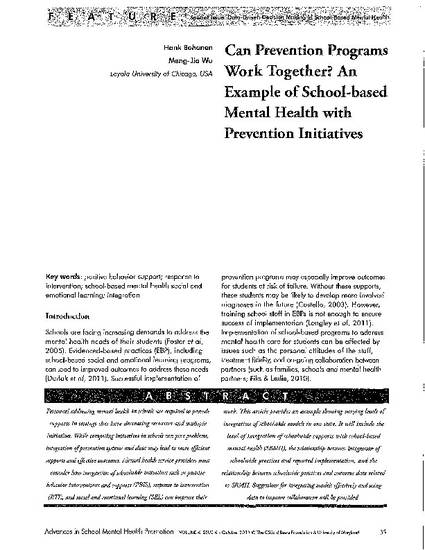
Personnel addressing mental health in schools are required to provide supports in settings that have decreasing resources and multiple initiatives. While competing initiatives in schools can pose problems, integration of prevention systems and data may lead to more efficient supports and effective outcomes. Mental health service providers must consider how the integration of schoolwide initiatives such as positive behavior interventions and supports (PBIS), response to intervention (RtI), and social and emotional learning (SEL) can improve their work. This article will provide an example showing varying levels of integration of schoolwide models in one state. This example will include (a) the level of integration of schoolwide supports with school-based mental health (SBMH), (b) the relationship between integration of schoolwide practices and reported implementation, and (c) the relationship between schoolwide practices and outcome data related to SBMH. Suggestions for integrating models effectively and using data to improve collaboration will be provided.
Copyright © 2011 The Clifford Beers Foundation & University of Maryland

This article was originally published in Advances in School Mental Health Promotion, Vol. 4, Issue 4 (October 2011).